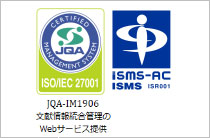ホームIMICライブラリMMWR抄訳2016年(Vol.65)医師に診断された関節炎を有する成人における重度の関・・・
2016/10/07Vol. 65 / No. 39
MMWR65(39):1052-1056
Prevalence of Severe Joint Pain Among Adults with Doctor-Diagnosed Arthritis — United States, 2002–2014
医師に診断された関節炎を有する成人における重度の関節痛の発現率 ― アメリカ、2002~2014年
アメリカにおいて関節炎は身体的障害の主因であり、重度の関節痛(SJP)は身体機能を制限し、QOLを低下させる。医師により診断された関節炎を有する成人におけるSJPの発現率と、その2002~2014年における傾向を明らかにするため、CDCはNational Health Interview Surveyの2014年のデータを解析した。2002、2003、2006、2009、2014年の回答者数の範囲は、24,275名(2006年)~36,697名(2014年)であった。関節痛は、最近30日間における発現程度が自己申告で10段階の7以上の場合をSJPとした。2014年、関節炎の年齢調整有病率は20.8%であった。関節炎を有する成人におけるSJPの発現率は27.2%、年齢調整発現率は26.5%であり、45~64歳の年齢層で最も高かった(30.7%)。人口統計学的集団におけるSJPの年齢調整発現率は、女性(29.2%)、非ヒスパニック系黒人(42.3%)、ヒスパニック系(35.8%)、身体障害者(45.6%)、高卒未満の学歴(40.2%)、非就労者(51.9%)にて有意に高かった。健康状態については、まあまあ~悪い(49.1%)、肥満(31.7%)、心臓病(34.1%)、糖尿病(40.9%)、深刻な精神的苦痛を有する(56.3%)と回答した者において最も高かった。2002~2014年の間、関節炎成人におけるSJPの年齢調整発現率に有意な変化はなかったが、SJPを有する成人の数は、2014年に推定146万人であり、2002年の推定105万人と比べ有意に多かった。慢性疼痛の治療において、オピオイド鎮痛薬は十分なエビデンスがない上に長期使用には深刻なリスクを伴う。CDCのガイドラインでは、関節炎の治療には運動療法、認知行動療法、アセトアミノフェン、非ステロイド性抗炎症剤を推奨している。医療者は、関節炎患者の疼痛低減と健康向上のため、自己管理教育と適切な身体活動の介入を行うべきである。
References
- Barbour KE, Helmick CG, Theis KA, et al. Prevalence of doctor-diagnosed arthritis and arthritis-attributable activity limitation—United States, 2010–2012. MMWR Morb Mortal Wkly Rep 2013;62:869–73.
- Brault MW, Hootman JM, Helmick CG, Theis KA, Armour BS. Prevalence and most common causes of disability among adults—United States, 2005. MMWR Morb Mortal Wkly Rep 2009;58:421–6.
- Hootman JM, Helmick CG, Barbour KE, Theis KA, Boring MA. Updated projected prevalence of self‐reported doctor‐diagnosed arthritis and arthritis‐attributable activity limitation among US adults, 2015–2040. Arthritis Rheumatol 2016;68:1582–7. <http://dx.doi.org/10.1002/art.39692>
- Wilkie R, Blagojevic-Bucknall M, Belcher J, Chew-Graham C, Lacey RJ, McBeth J. Widespread pain and depression are key modifiable risk factors associated with reduced social participation in older adults: a prospective cohort study in primary care. Medicine (Baltimore) 2016;95:e4111. <http://dx.doi.org/10.1097/MD.0000000000004111>
- Hawker GA, Gignac MA, Badley E, et al. A longitudinal study to explain the pain-depression link in older adults with osteoarthritis. Arthritis Care Res (Hoboken) 2011;63:1382–90. <http://dx.doi.org/10.1002/acr.20298>
- Klein RJ, Schoenborn CA. Age adjustment using the 2000 projected US population. Healthy people statistical notes, no. 20. Hyattsville, Maryland: US Department of Health and Human Services, CDC, National Center for Health Statistics; 2001.
- Dowell D, Haegerich TM, Chou R. CDC guideline for prescribing opioids for chronic pain—United States, 2016. MMWR Recomm Rep 2016;65(No. RR-1).
- Brady TJ, Jernick SL, Hootman JM, Sniezek JE. Public health interventions for arthritis: expanding the toolbox of evidence-based interventions. J Womens Health (Larchmt) 2009;18:1905–17. <http://dx.doi.org/10.1089/jwh.2009.1571>
- Brady TJ, Murphy L, O’Colmain BJ, et al. A meta-analysis of health status, health behaviors, and healthcare utilization outcomes of the Chronic Disease Self-Management Program. Prev Chronic Dis 2013;10:120112. <http://dx.doi.org/10.5888/pcd10.120112>
- Sacks JJ, Harrold LR, Helmick CG, Gurwitz JH, Emani S, Yood RA. Validation of a surveillance case definition for arthritis. J Rheumatol 2005;32:340–7.
Copyright © 2013 International Medical Information Center. All Rights Reserved.












